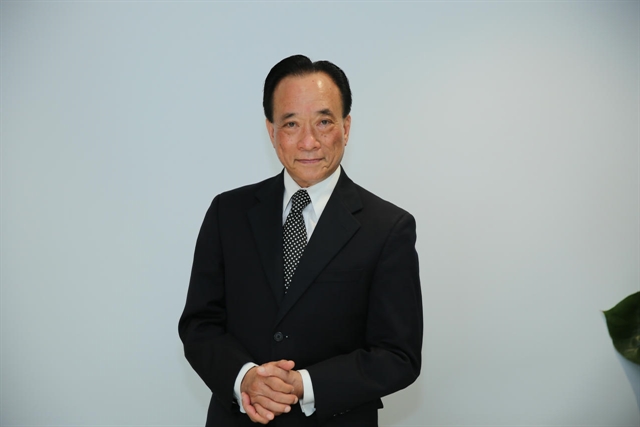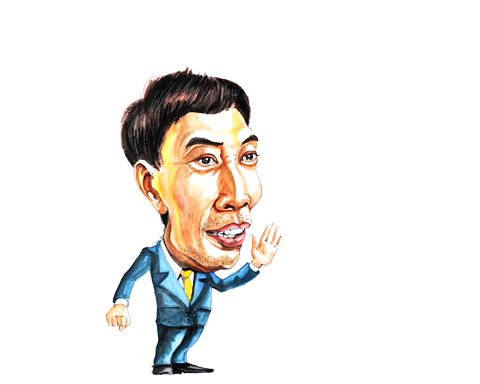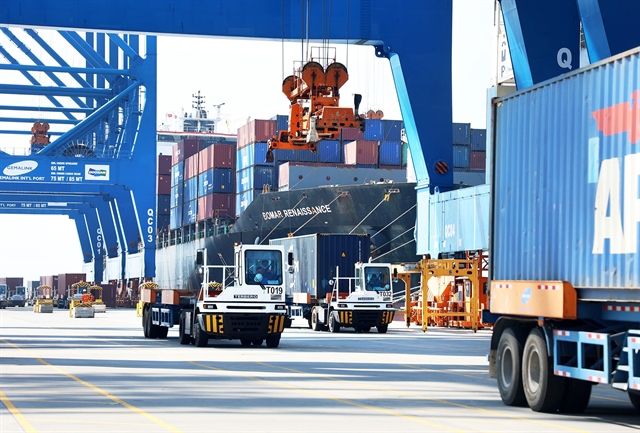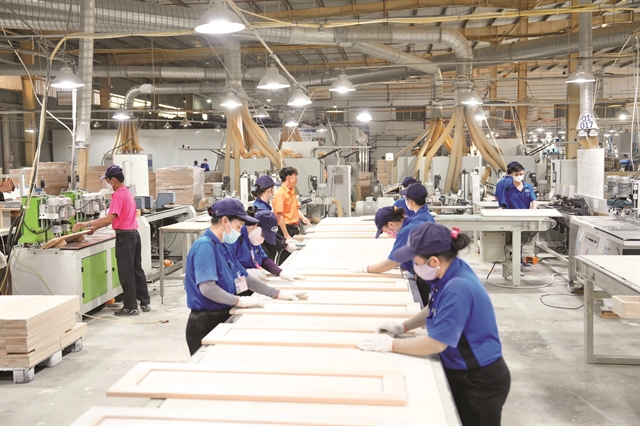 Economy
Economy

 |
*Võ Trí Thành
US President Donald Trump on Saturday signed an executive order imposing new tariffs of 25 per cent on imports from Mexico and Canada, and 10 per cent on goods from China, effective from February 4. Canada’s energy resources face a lower, 10 per cent tariff, to avoid disruptions in gasoline and home heating oil prices.
These new tariffs, impacting trade worth a total of US$1.6 trillion between the US and the three countries, signify a fresh chapter in the US’s foreign policy under Trump.
This move is part of Trump's broader plan to use trade policy to drive economic growth. He has been vocal about his intent to impose tough tariffs on trade partners, claiming that such measures will fuel America’s economy and provide a robust federal budget.
Trump first outlined these views during his election campaign, and since taking office, he remains a subject of global attention, with the international community keenly observing his next moves.
Trump’s policies are often associated with slogans like 'Make America Great Again' (MAGA) and the 'America First Trade Policy'.
Known as 'Tariff Man', he believes tariffs are essential not only for economic protection but also for managing international relations. He has threatened 100 per cent tariffs on countries that undermine the US dollar by creating their own currencies.
Trump is also sceptical of multilateral organisations, preferring bilateral relations. Early in his presidency, he withdrew the US from the Paris Agreement on climate change and the World Health Organisation (WHO).
His presidency from 2016 to 2020 left a lasting impact, especially in recognising China as a major geopolitical threat, leading to a trade war over trade surpluses.
With Trump returning to office in January 2025, the international landscape has changed, marked by global conflicts, economic instability and shifting alliances. This volatile backdrop could make the effects of his policies even more significant.
On his first day back in office, the White House announced the 'America First Trade Policy', reiterating his commitment to protectionism.
Before taking office, Trump had threatened to impose tariffs as high as 60 per cent on Chinese goods, with other countries facing a 10 per cent levy. If fully implemented, these tariffs could have a far-reaching impact on global trade and growth.
According to predictions in a recent report by the Pacific Economic Cooperation Council (PECC), growth in the Asia-Pacific region - a most dynamic and open region - is expected to slow from 3.4 per cent in 2024 to 2.9 per cent over the next two to three years.
The rise of protectionism brings major risks, including geopolitical tensions, sanctions, trade wars, climate change, global supply chain issues and the fragmentation of the global economy.
One of the most significant risks of protectionist trade policies is retaliation by other nations, potentially leading to a global trade conflict. For instance, Canadian Prime Minister Justin Trudeau has already imposed retaliatory tariffs of 25 per cent on $155 billion of US goods.
He plans to increase tariffs on another $30 billion worth of US products, with further tariffs on the remaining $125 billion in 21 days.
Similarly, Mexico’s President Claudia Sheinbaum has also threatened retaliation, although she has expressed willingness to continue dialogue on border issues with Trump.
China has been more cautious in its response, announcing plans to challenge the 10 per cent tariff at the World Trade Organisation and implement unspecified retaliatory measures.
Trump’s economic advisers argue that the broad application of tariffs will not lead to inflation, as the strengthening of the US dollar will make imports cheaper. They also believe that domestic tax cuts and regulatory changes will boost US GDP while reducing the deficit.
However, tax experts warn that escalating tensions, fears of retaliation and trade wars could lead many businesses to cut investments, affecting global supply chains. This would have far-reaching consequences, particularly for emerging markets and developing economies.
According to an economic impact model created by EY’s Chief Economist Greg Daco, Trump’s proposed tariffs would reduce US economic growth by 1.5 percentage points this year, push Canada and Mexico into recession, and lead to “stagflation”.
Another contradiction in Trump’s policies is their effect on inflation. While the Federal Reserve hesitates to cut interest rates due to inflation concerns, tariffs drive up prices, preventing rate cuts and keeping the US dollar strong. This also pressures exchange rates in other countries.
For emerging markets, high US interest rates may limit the effectiveness of their monetary policies. At the same time, Trump’s push to lower interest rates to boost domestic investment clashes with his tariff policies.
Impacts on Việt Nam
The impact of Trump’s trade policy on Canada, Mexico and China will become clearer over time. However, for Việt Nam, the situation requires constant monitoring.
 |
| Containers at the Cái Mép - Thị Vải port complex in Bà Rịa - Vũng Tàu Province. The US is Việt Nam’s top export market, making up nearly 30 per cent of exports in 2024, with a $104.6 billion trade surplus. VNA/VNS Photo Hồng Đạt |
If Trump’s tariffs are extended to Việt Nam, they could have significant effects on the Vietnamese economy through trade balances, exchange rates, supply chains and foreign direct investment (FDI).
The US is Việt Nam’s largest export market, accounting for nearly 30 per cent of the country’s exports in 2024, with a trade surplus of $104.6 billion.
During Trump’s first term, Việt Nam and some other economies seen to be benefitted greatly from the US-China trade war as many manufacturers moved their factories there to avoid US tariffs. This helped Việt Nam achieve the third-largest trade surplus with the US, after China and Mexico. Under President Joe Biden, the US-Việt Nam relationship continued to strengthen with the establishment of the US-Việt Nam comprehensive strategic partnership.
In the second term of Trump’s presidency, however, Việt Nam might not enjoy the same benefits, and FDI flows could slow in early 2025 until investors have a clearer understanding of whether Việt Nam will be targeted by his policies.
Previously, the effects of US tariffs on Vietnamese goods were not significant. But as we enter 2025, the Ministry of Industry and Trade of Việt Nam has outlined two scenarios. The optimistic scenario is that the US will maintain its current tariff policies on Vietnamese goods, while the shift in supply chains may bring in more investment to boost exports.
In the second scenario, stricter tariffs could disrupt the global economy and negatively affect Việt Nam’s exports. China, a key US partner, may also struggle, putting more pressure on Việt Nam. The ministry may then submit reports to the government for support to help businesses diversify their markets.
However, in addition to monitoring the situation and minimising negative impacts, Việt Nam can capitalise on the US-China conflict to remain a competitive investment destination.
Việt Nam must carefully navigate these uncertainties by responding proactively and seizing new opportunities amidst the global tensions.
Việt Nam’s financial position remains strong, with a public debt only less than 40 per cent of GDP, and its growing infrastructure and legal framework improvement provide a solid foundation for resilience.
Việt Nam also needs to enhance its domestic capabilities - focusing on local businesses, technology and human capital.
In terms of relations, handling interactions skillfully with major partners is crucial. Việt Nam is in a good position to do this, as it is a strategic/comprehensive strategic partner with many large countries.
As Việt Nam targets 8 per cent growth this year, the focus is not only on achieving higher numbers but also, more importantly, on building a strong foundation for long-term sustainabledevelopment and strengthening its international position through smart diplomacy with global powers. Việt Nam's future will depend on these strategies, creating a growth-friendly environment amid global uncertainties.
*Võ Trí Thành is former vice-president at the Central Institute for Economic Management (CIEM) and a member of the National Financial and Monetary Policy Advisory Council. With a doctorate in economics from Australian National University, Thành mainly undertakes research and provides consultation on issues related to macroeconomic policies, trade liberalisation and international economic integration. Other areas of interest include institutional reforms, financial systems and economics of development. He authors the Việt Nam News column Analyst’s Pick.




